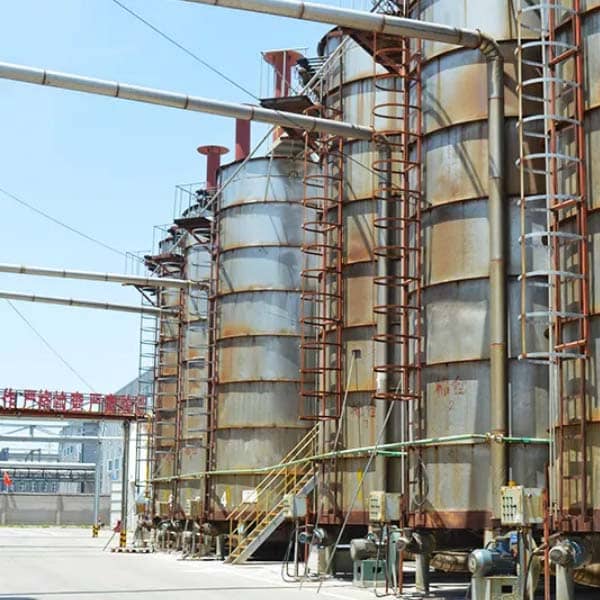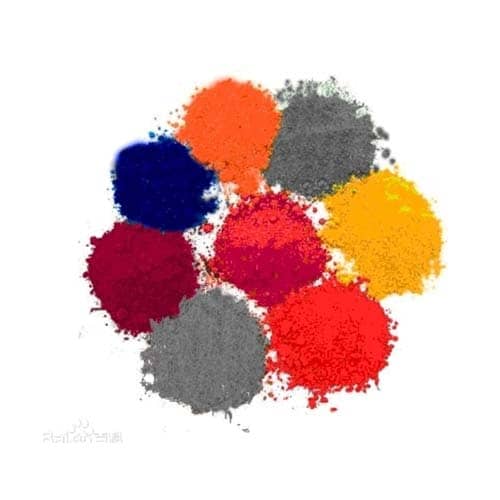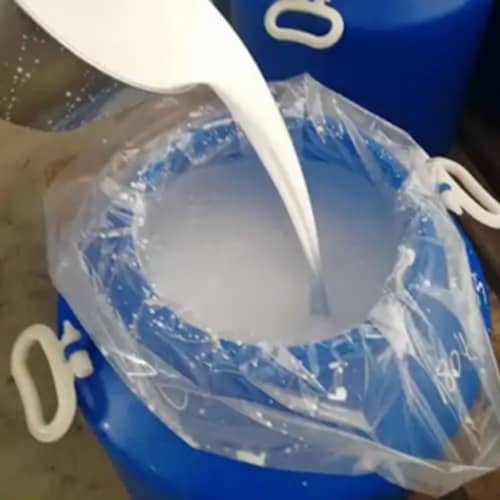Производитель карбоксиметилцеллюлозы
Производитель карбоксиметилцеллюлозы(Introduction to Carboxymethyl Cellulose)
Natural cellulose is the most widely distributed and abundant polysaccharide in nature, and its sources are very rich.
Current cellulose modification technology mainly focuses on etherification and esterification.
Carboxymethylation reaction is a type of etherification technology.
Carboxymethylcellulose (CMC) is obtained after carboxymethylation of cellulose. Its aqueous solution has the functions of thickening, film-forming, adhesion, moisture retention, colloid protection, emulsification and suspension.
It is widely used in petroleum, food, medicine, textile and paper making industries and is one of the most important cellulose ethers.
Carboxymethyl Cellulose manufacturer (The main purpose)
Carboxymethylcellulose (CMC) is a non-toxic and odorless white flocculent powder with stable performance and easily soluble in water. Its aqueous solution is a neutral or alkaline transparent viscous liquid, soluble in other water-soluble glues and resins, but insoluble In organic solvents such as ethanol.
CMC can be used as a binder, thickener, suspending agent, emulsifier, dispersant, stabilizer, sizing agent, etc.
Карбоксиметилцеллюлоза (КМЦ) – продукт с самым большим выходом, самым широким спектром применения и самым удобным применением среди эфиров целлюлозы. Он широко известен как «промышленный глутамат натрия».
1. Используется при бурении нефти и природного газа, рытье скважин и других проектах.
- CMC-containing mud can form a thin, hard, low-permeability filter cake on the well wall, reducing water loss.
- After adding CMC to the mud, the drilling rig can obtain a low initial shear force, making it easy for the mud to release the gas trapped in it, and at the same time, the debris will be quickly discarded in the mud pit.
- Drilling mud, like other suspended dispersions, has a certain existence period. Adding CMC can stabilize it and extend its existence period.
- Mud containing CMC is rarely affected by mold, so there is no need to maintain a high pH value or use preservatives.
- Containing CMC as drilling mud cleaning fluid treatment agent, which can resist the pollution of various soluble salts.
- CMC-containing mud has good stability and can reduce water loss even if the temperature is above 150°C.
КМЦ с высокой вязкостью и высокой степенью замещения подходит для бурового раствора с низкой плотностью, а КМЦ с низкой вязкостью и высокой степенью замещения подходит для бурового раствора с высокой плотностью. Выбор ККМ должен определяться на основе различных условий, таких как тип бурового раствора, регион и глубина скважины.
2. Используется в текстильной, полиграфической и красильной промышленности. В текстильной промышленности КМЦ используется в качестве проклейки легкой пряжи из хлопка, шелковой шерсти, химических волокон, смесовых и других тканей;
3. Used in the papermaking industry. CMC can be used as paper smoothing agent and sizing agent in the papermaking industry. Adding 0.1% to 0.3% CMC to paper pulp can increase the paper’s tensile strength by 40% to 50%, increase its compressive strength by 50%, and increase its kneadability by 4 to 5 times.
4. CMC can be used as a dirt adsorbent when added to synthetic detergents; in daily chemicals such as the toothpaste industry, CMC’s glycerin aqueous solution is used as the gum base of toothpaste; in the pharmaceutical industry, it is used as a thickener and emulsifier; after the CMC aqueous solution is thickened, it is used as a float Mineral processing, etc.
5. Used in the ceramic industry as an adhesive, plasticizer, glaze suspending agent, and color-fixing agent for blanks. Carboxymethyl Cellulose manufacturer
6. Используется в строительстве для улучшения удержания воды и прочности.
7. Used in the food industry. The food industry uses CMC with a high degree of substitution as a thickener for ice cream, canned food, instant noodles, and a foam stabilizer for beer. It is used in the processing of jam, syrup, sherbet, snacks, ice cream drinks, etc. As a thickening agent, binder or shaping agent.
8. The pharmaceutical industry selects CMC with appropriate viscosity as binder, disintegrant for tablets, and suspending agent for suspensions.
Производитель карбоксиметилцеллюлозы Technical field
Carboxymethylated cellulose is a derivative of cellulose, in which a carboxymethyl group is bonded to a part of the hydroxyl group in the glucose residue that constitutes the skeleton of cellulose through an ether bond. Carboxymethyl Cellulose manufacturer
As the amount of carboxymethyl groups increases (ie, the degree of substitution of carboxymethyl groups increases), carboxymethylated cellulose dissolves in water.
On the other hand, by adjusting the degree of carboxymethyl substitution to an appropriate range, the fibrous shape of carboxymethyl cellulose can be maintained even in water. Carboxymethyl Cellulose factory.
As a method for producing carboxymethylated cellulose, it is generally known that the cellulose is treated with an alkali (alkalinized) and then treated (carboxymethylated) with an etherifying agent (also called a carboxymethylating agent). called etherification.) method.
There are known methods of performing both alkalization and carboxymethylation using water as a solvent, and methods of performing both alkalization and carboxymethylation in a solvent mainly composed of an organic solvent (Patent Documents 1 to 4), the former is called the “water medium method” and the latter is called the “solvent method”. Carboxymethyl Cellulose manufacturer
Contents of the invention
Carboxymethylcellulose is used as an additive in various fields such as food and beverages, cosmetics, and water-based coatings due to its properties such as thickening, water absorption, and water retention. Carboxymethyl Cellulose manufacturer
These general-purpose carboxymethylated celluloses are usually water-soluble polymers with a carboxymethyl substitution degree (also called etherification degree) of 0.55 or more.
On the other hand, in recent years, studies have been conducted on carboxymethylated cellulose that maintains the crystallinity of cellulose by setting the degree of carboxymethyl substitution to 0.50 or less and partially maintaining a fibrous shape without completely dissolving in water. to explore new uses utilizing its characteristics such as shape and crystallinity. Carboxymethyl Cellulose manufacturer
The object of the present invention is to provide carboxymethylated cellulose having novel characteristics, in particular, a low degree of carboxymethyl substitution (0.50 or less) and a high crystallinity of cellulose I type (50% or more).
The present inventors studied carboxymethylated cellulose with a low degree of carboxymethyl substitution (0.50 or less) and a high degree of crystallization of cellulose I type (50% or more).
However, carboxymethylated cellulose in which both the degree of carboxymethyl substitution and the crystallinity of cellulose I type are within the above ranges are likely to be inhomogeneous, resulting in problems such as unstable dispersion. In addition, the fibrous shape is easily maintained in the dispersion medium and agglomeration (caking) is easily formed. Carboxymethyl Cellulose manufacturer
It is presumed that this is because local introduction of carboxymethyl groups into cellulose results in partially soluble parts in water and parts insoluble in carboxymethylated cellulose, resulting in quality differences caused by the state of introduction of carboxymethyl groups. Dispersion is unstable. This phenomenon is particularly significant when the degree of substitution of the carboxymethyl group is low.
This is considered to be because it is difficult to introduce a small amount of carboxymethyl groups into cellulose uniformly (not in a densely packed form at one position or multiple positions). Carboxymethyl Cellulose factory
In addition, it is considered that when a portion locally dissolved in the dispersion medium and an insoluble portion occur in carboxymethylcellulose, the insoluble portion tends to remain in the form of a lump.
In addition, for example, in the range of the carboxymethyl substitution degree of 0.20 to 0.50, it is difficult to maintain the crystallinity of cellulose type I at 50% or more. Carboxymethyl Cellulose manufacturer
It is presumed that this is because local introduction of carboxymethyl groups into cellulose causes dissolution in water starting from the portion where the substituents are concentrated, thereby reducing the crystallinity of the entire carboxymethylated cellulose.
In order to produce carboxymethylated cellulose with more stable quality (uniform dispersion), the present inventors have a low carboxymethyl substitution degree (0.50 or less) and a high crystallinity of cellulose I type (50% or more). Carboxymethylated cellulose has been intensively studied.
It was found that in the carboxymethylation of cellulose, alkalinization (alkali treatment of cellulose) in a water-based solvent, Carboxymethyl Cellulose factory
Thereafter, carboxymethylation (also called etherification.) is performed in a mixed solvent of water and organic solvent, Carboxymethyl Cellulose manufacturer
Therefore, it is different from the conventional water-based method (a method that uses water as a solvent to perform both alkalinization and carboxymethylation) and the solvent method (a method that uses an organic solvent as the main solvent to perform both alkalinization and carboxymethylation). square method) Carboxymethyl Cellulose manufacturer
Compared with the obtained carboxymethylated cellulose, it is possible to produce carboxymethylated cellulose with a lower degree of carboxymethyl substitution (less than 0.50) and a higher degree of crystallinity of cellulose I type (more than 50%). Carboxymethylated fiber The quality of the ingredients is stable (even dispersion), high water retention, and not easy to agglomerate when dispersed in water.
Examples of the present invention include, but are not limited to, the following aspects.
(1) A carboxymethylated cellulose having a carboxymethyl substitution degree of 0.50 or less and a cellulose type I crystallinity of 50% or more. Carboxymethyl Cellulose manufacturer
(2) The carboxymethylated cellulose according to (1), wherein the degree of anionization is 0.00meq/g to 1.00meq/g.
(3) The carboxymethylated cellulose according to (1), wherein the Schauer-Rigler freeness is 60.0°SR or more.
(4) The carboxymethylated cellulose according to (3), wherein the Canadian standard freeness is 150 ml or less. Carboxymethyl Cellulose factory
(5) The carboxymethylated cellulose according to (1), wherein carboxymethylated cellulose is added to 500 g of water, stirred at 400 rpm for 5 seconds, and then naturally filtered using a 20-mesh filter. The dry mass of the filtration residue is 0 to 30% by mass relative to the dry mass of carboxymethylcellulose thrown into the water. Carboxymethyl Cellulose manufacturer
(6) The carboxymethylated cellulose according to (1), which has a viscosity (30 rpm, 25° C.) of 10.0 mPa·s or less when used as an aqueous dispersion with a solid content of 1% (w/v). Carboxymethyl Cellulose factory
(7) The carboxymethylated cellulose according to any one of (1) to (6), which has a structure in which a carboxymethyl group is ether bonded to a part of the hydroxyl groups in the glucose residues constituting the cellulose.




